You can view all the posts in the epic “Writing a Maths Scheme of Work” series on this page. It’s kind of like Game of Thrones, only with slightly less nudity and dragons.
In my Content and Order post, I talked about how we had made use of the excellent resources by Kangaroo Maths to build the foundations of our brand new maths scheme of work. I loved the way they were laid out, easy to edit, and (crucially for us) easy to move around to create our preferred order.
Well, I have exciting news… make sure you are sat down and fastened in securely… the best has only gone and get better!
Steve Lomax and Matthew Nixon, the creators of Kangaroo Maths and the biological fathers of Kenny the Kangaroo, contacted me to share the latest updates to their work, and it is now freely available on their website.
In this post I will go through these new materials and talk briefly about how we have built them into our scheme of work.
11-16 Pathway Documents
These are individual word files, each of which covers a “Stage”. As can be seen from the image above, two Stages roughly correspond to each year. For example, Year 8 high achieving students would be Stage 8, and lower achieving students would be Stage 7.
Steve and Matthew have chosen this structure to fit in with the following stated aims from the new maths national curriculum:
‘The expectation is that the majority of pupils will move through the programmes of study at broadly the same pace. However, decisions about when to progress should always be based on the security of pupils’ understanding and their readiness to progress to the next stage. Pupils who grasp concepts rapidly should be challenged through being offered rich and sophisticated problems before any acceleration through new content. Those who are not sufficiently fluent with earlier material should consolidate their understanding, including through additional practice, before moving on.’
I couldn’t agree more. As I said when on a panel at a recent maths conference, I would make it illegal to teach things like trigonometry in Year 7, no matter how bright the students. It should be depth and not breadth. Many topics should be left until later on in a student’s mathematical journey at school, not only because often they are ready for them, but also to ensure there are some surprises left. What is the point in teaching everything a child needs to know by the end of Year 9?
Inside each Word document is exactly what we needed for our scheme of work – a clearly laid out, detailed page, for each key Topic Unit that provides really useful information and guidance.
Most of the sections are self explanatory (Key Concepts, Possible Learning Intentions, Possible Success Criteria, Prerequisites, and Mathematical Language).
And then there are the following lovely sections:
Pedagogical Note: with links to excellent NCETM departmental workshops, and really nice advice and discussion points about possible approaches to teaching the content
Reasoning Opportunities and Probing Questions: really useful questions to ask to challenge the students and help consolidate and deepen their understanding
Suggested Activities: Links to high quality (and free!) activities from Kangaroo Maths and NRICH
Possible Misconceptions: really useful pointers, especially for staff who may not have taught this content before, to give them an insight into potential areas of difficulty.
I think these just give the right amount of support and guidance, avoiding being too prescriptive or too vague.
As well as containing relevant, extremely useful information, what we particularly like about these documents is that they can be edited! 🙂
So, I spent last night breaking them down into individual, single-page Word files, removing bit that we didn’t want to cover at that stage, adding in bits we did, and then putting them back together into Topic Units. Thus making the ideal Medium Term Plans 🙂
One of these documents will sit inside each individual Topic Unit folder. This suits the structure of our scheme of work perfectly, as staff can not only see how a topic progresses, but choose a starting and an ending point that is relevant to their group.
You can see an example of one I put together for the Properties of Shapes Topic Unit for our Year 7s by clicking here
And you can download the documents for Stages 6 to 9 from Kangaroo Maths by clicking here.
NOTE: These documents are complete up to the start of Spring Term, with the following updates planned:
- the next batch of units for Stages 1, 2, 3, 4, 5, 6, 7, 8, 9 will then be populated for the Spring term and available in Kenny’s Pouch by the end of November
- the final batch of units for Stages 1, 2, 3, 4, 5, 6, 7, 8, 9 will then be populated for the Summer term and available in Kenny’s Pouch by the end of March
- the final batch of units for Stages 1, 2, 3, 4, 5, 6, 7, 8, 9 will then be populated for the Summer term and available in Kenny’s Pouch by the end of March
- Stages 10 and 11 will then start a similar cycle in line with the ‘teaching from Sept 2015’ timeline
Medium Term Plans
Kangaroo Maths also has a useful document that they call “Medium Term Plans”. For each Stage, this shows all the key concepts that the students need to know, both individually and grouped under key concepts
Click here to get access to this document
Big Picture Progression Map
This has been shared before, but it is so good it deserves a second viewing! There are numerous tabs at the bottom to sort the curriculum out however you could possibly want.
This is the original document we used to devise our order originally, so it will always have a place in my heart.
Click here to get it
Kangaroo Maths Presentation
Finally, you might find the following PowerPoint useful. Steve and Matthew presented this at a recent conference, and it outlines their thoughts and rationale behind the scheme
Click here to get the second half (the best bit!) of it
I think these are such useful resources for anyone, like us, creating a maths scheme of work to help prepare our students for the demands of the new curriculum. And I would just like to offer my thanks to Steve Lomax and Matthew Nixon for all their work on this. It is very much appreciated.
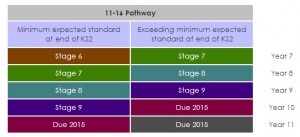
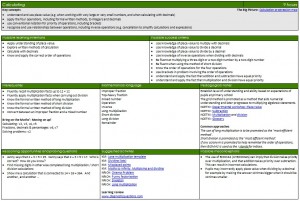
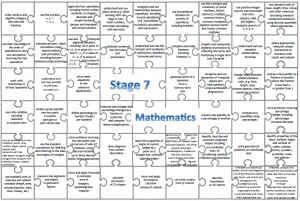
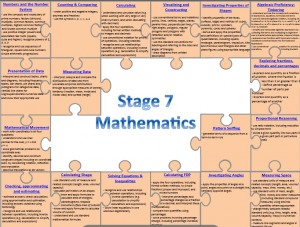
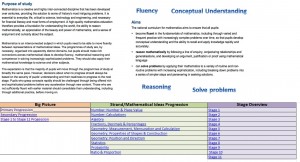
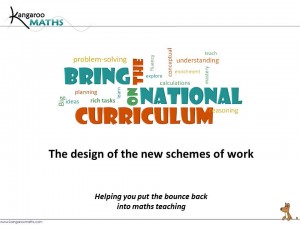
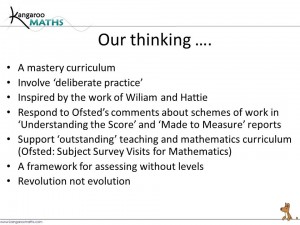
I just had a look earlier today! I do like the way it is laid out. It’s is amazing! The have done so much on it and this will save us a lot of time. Thank you so much.